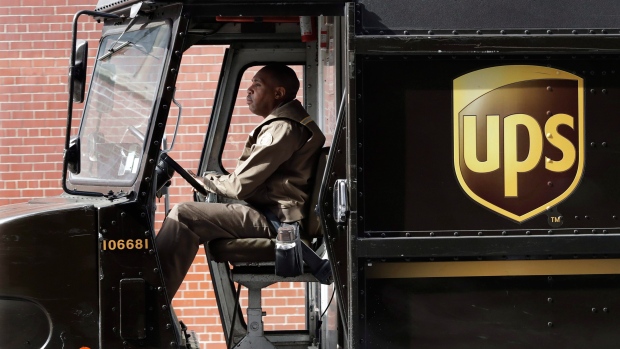Sep 13, 2018
UPS tumbles as US$1B savings goal disappoints
, Bloomberg News

United Parcel Service Inc. (UPS.N) dropped after saying it expects to reap US$1 billion of annual cost savings from stepped-up investment to make its network more efficient while handling a rush of packages from booming e-commerce.
The company said it would incur one-time charges of between US$550 million and US$750 million for the plan, which includes ordering new aircraft, building automated sorting centers and offering employees early retirement. UPS also plans to focus on more profitable small-business and health-care customers.
UPS is spending US$7 billion this year to contend with a surge in e-commerce that has dramatically changed an arena the company has dominated since it was created 111 years ago. Those single-package deliveries to homes aren’t as profitable as multiple shipments to businesses, however. Investors were hoping the capital investments would yield greater savings than executives laid out Thursday in a presentation to analysts.
The shares fell 1.9 per cent to US$121 in New York at 11:27 a.m. in New York after dropping 2.3 per cent, the most intraday since June 28. UPS had climbed 3.5 per cent this year through Wednesday, while the S&P 500 Index advanced 8.1 per cent.
The Atlanta-based company said it will maintain an elevated investment level for 2019 and 2020, spending between 8.5 per cent and 10 per cent of revenue each year.
UPS expects to add sorting capacity of as much as 400,000 pieces an hour this year and the next two. After the investment, all packages will be processed through new, automated centers, up from about 50 per cent now.
The company forecast that the plan will add US$1 to US$1.20 a share to adjusted earnings by 2022, mostly from cost savings. The company posted profit of US$6.01 a share last year.
UPS is trying to protect average operating profit margin of about 13 per cent over the past five years and a five-year average return on invested capital of 24 per cent, more than double that of rival FedEx Corp.



